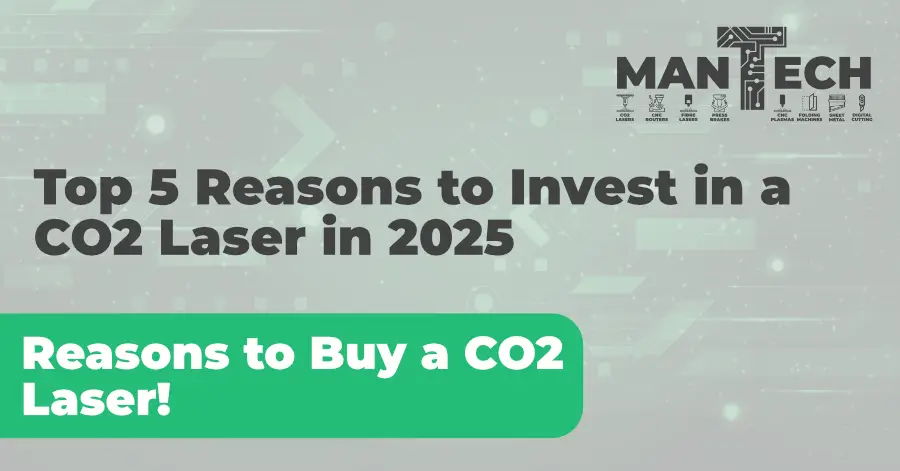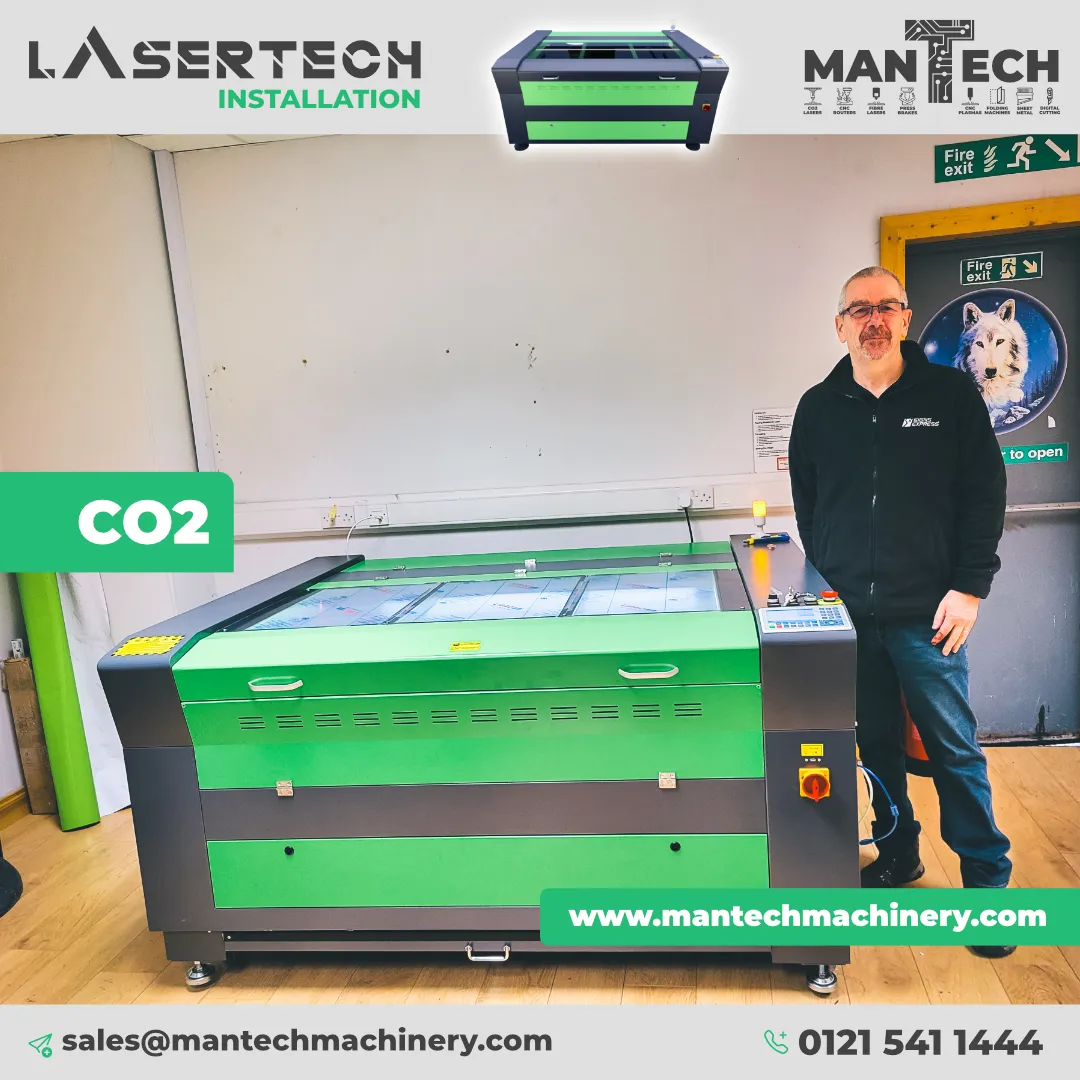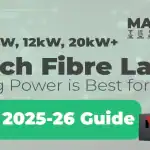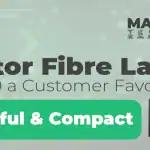The world of digital fabrication is rapidly evolving, and at its heart lies the power of laser technology. As we look towards 2025, one tool continues to stand out for its versatility, precision, and potential to revolutionise creative and industrial workflows: the
CO2 Laser Cutter.
But with so many options available, why should you specifically consider a CO2 laser cutter in the coming year? We’ve consulted with industry experts and analysed emerging trends to bring you the top 5 compelling reasons to make a CO2 laser cutter a cornerstone of your business, workshop, or educational institution in 2025.
1. Unrivalled Precision for Intricate Designs and Prototyping
In 2025, the demand for customized, highly detailed products and prototypes is only going to intensify. CO2 laser cutters excel in delivering
exceptional precision, allowing you to create intricate designs with incredible accuracy. Whether you’re working with delicate fabrics, complex acrylic patterns, or detailed wood inlays, the beam of a CO2 laser offers a level of control unmatched by many other fabrication methods.
Reduced Material Waste: Precision cutting minimizes errors and waste, saving you money and resources.
Fine Detail Engraving: Achieve photo-realistic engravings and intricate patterns on a wide array of materials.
Rapid Prototyping: Quickly iterate designs and create functional prototypes with laser-cut precision, accelerating your product development cycle.
Beyond the Cut: The Engraving Advantage
It’s not just about cutting through materials.
CO2 laser cutters are also masters of engraving. From personalised gifts and awards to industrial markings and branding, the ability to precisely etch designs adds another layer of value and application versatility to your investment.
2. Material Mastery: Expanding Your Creative and Industrial Horizons
The true power of a CO2 laser cutter lies in its
material versatility. In 2025, as material science continues to advance, CO2 lasers remain incredibly adaptable. They can effortlessly process a vast range of non-metallic materials, including:
Wood and Plywood: From hobbyist crafts to furniture components.
Acrylic and Plastics: For signage, displays, and functional parts.
Fabrics and Textiles: Cutting intricate patterns for fashion, upholstery, and technical textiles.
Paper and Cardboard: Prototyping packaging, creating intricate paper crafts, and more.
Leather and Rubber: Custom accessories, gaskets, and seals.
Glass and Ceramics (Engraving): Personalizing and decorating surfaces.
Eco-Friendly Material Options Gain Traction
As sustainability becomes increasingly important, the ability of CO2 lasers to work with eco-friendly materials like bamboo, recycled wood composites, and sustainable fabrics further strengthens their relevance in 2025 and beyond.
3. Speed and Scalability for On-Demand Production and Efficiency
In today’s fast-paced world,
speed and efficiency are paramount. CO2 laser cutters offer rapid cutting and engraving speeds, significantly reducing production times compared to manual methods or slower alternatives. This translates to:
Increased Throughput: Process larger volumes of work in less time.
Faster Turnaround Times: Meet demanding deadlines and customer expectations.
Scalable Production: Easily scale up production as demand grows.
Automation Potential: Integrate with automated workflows for even greater efficiency.
Streamlining Workflows with Digital Precision
By integrating seamlessly with digital design software (like CorelDRAW, Adobe Illustrator, AutoCAD all support exporting to formats such as PDF, AI, PNG, SVG, etc.), CO2 laser cutters streamline the entire design-to-production process, minimising manual steps and the potential for errors.
4. The Democratisation of Innovation: Making Advanced Tech Accessible
While laser technology might have once seemed exclusive,
CO2 laser cutters are becoming increasingly accessible. In 2025, you’ll find a wider range of models and price points to suit various budgets and needs. This democratisation means:
Smaller Businesses Can Compete: Level the playing field by accessing advanced fabrication capabilities.
Hobbyists and Makers Empowered: Unleash creativity at home and in workshops.
Educational Institutions Enhanced: Equip students with cutting-edge skills for the future workforce.
Innovation Across Industries: From startups to established enterprises, more organisations can innovate with laser technology.
User-Friendly Interfaces and Software Improve Accessibility
Modern CO2 laser cutters are designed with user-friendliness in mind. Intuitive software interfaces and simplified workflows make them easier to operate, even for those without extensive technical expertise.
5. Sustainability and Eco-Conscious Creation
In an increasingly environmentally conscious world, the
sustainability aspects of CO2 laser cutting are becoming even more significant. By choosing a CO2 laser cutter in 2025, you can contribute to more eco-friendly practices through:
Reduced Waste: Precision minimises material wastage.
Material Optimizations Efficiently utilise sheet materials.
Support for Sustainable Materials: Process eco-friendly materials like bamboo and recycled options (as mentioned earlier).
Long Lifespan Equipment: Investing in quality CO2 laser cutters can provide years of reliable service, reducing the need for frequent replacements.
Power Efficiency Improvements in Newer Models
Manufacturers are continually working to improve the power efficiency of CO2 laser cutters. Newer models often incorporate energy-saving features, reducing their environmental footprint and operational costs.
Conclusion: Invest in the Future with a CO2 Laser Cutter in 2025
As we move through 2025, the CO2 laser cutter emerges as a powerful and versatile tool for businesses, creators, and educators alike. From unmatched precision and material mastery to speed, accessibility, and sustainability, the top 5 reasons outlined above clearly demonstrate why investing in a CO2 laser cutter is a smart strategic decision. Embrace the future of digital fabrication and unlock a world of creative and industrial possibilities with this transformative technology.






